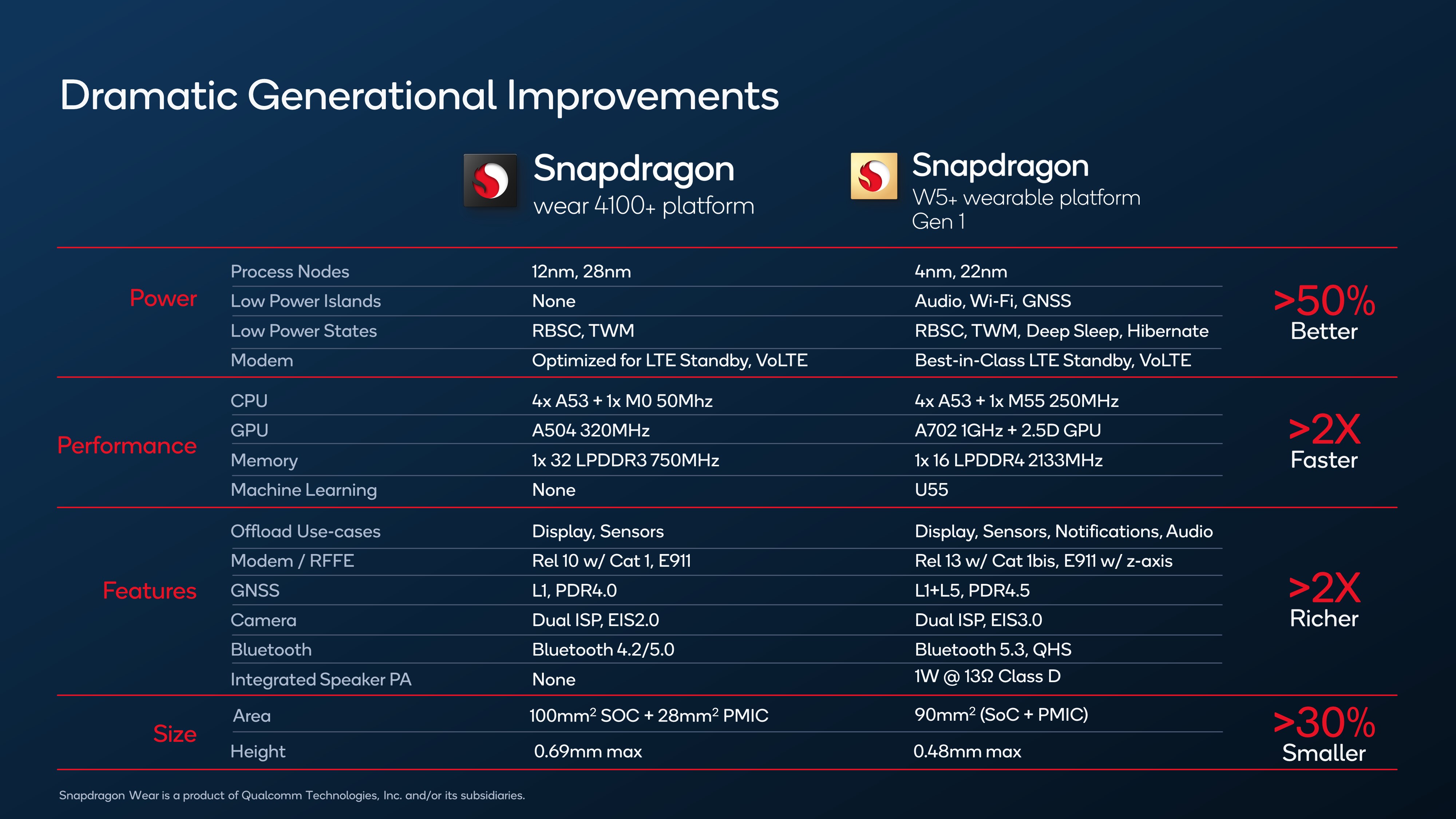I'm stupid excited for the future of Wear OS thanks to the new Snapdragon W5 Plus Gen 1
It's time for Wear OS to truly shine.

Wear OS is far from perfect; there's no debate about that. It can be a sluggish mess with disappointing battery life and decent app support at best.
With newer smartwatches, things have improved over the past year, and I'm always rooting for Wear OS to reach its full potential. That's why I can't help being stupidly excited about Qualcomm's new W5 platform.
Qualcomm is finally taking Wear OS seriously

One of the biggest reasons why Wear OS was plagued with problems was the chipset. With previous Snapdragon chips, it always seemed like Qualcomm wasn't really committed to the platform, and that it just threw chips together just to have something to put out.
Qualcomm's wearable chips have rarely been something to run home about, especially because they lacked the kind of efficiency that smartwatches require, given their smaller size. While Qualcomm put out yearly updates to its Android flagship chipsets, Wear OS smartwatches would be stuck with the same chip for a couple of years.
These were still improvements over their predecessors, but even the newer models still paled in comparison to smartwatches from Apple and even Samsung's older Tizen watches. As our Jerry Hildenbrand so eloquently put it, "being better than the previous poor experience isn't good enough when you can get a good, or better, experience from something else."
But with the new W5+ Gen 1 platform, Qualcomm seems to be putting its best foot forward. The W5+ is built on a 4nm process, which is a HUGE improvement compared to the 12nm process of the Snapdragon 4100 platform. It also puts itself in direct competition with Samsung's 5nm W920 chip found in the Galaxy Watch 4.
Not only that, but just looking at the comparison chart provided by Qualcomm gets me so excited for potential new capabilities for Wear OS. A dedicated machine learning core could go a long way to a better Google Assistant experience. Higher clocked CPU and GPU points to much faster performance, and the new LPDDR4 memory should hopefully mean fewer slowdowns and stutters.
Get the latest news from Android Central, your trusted companion in the world of Android
Plus, low-power islands for audio, Wi-Fi, and more should help with efficiency, along with improved standby for global LTE connectivity. The always-on co-processor is also responsible for handling more tasks, which saves the central processor from doing as much heavy lifting.
This is probably most exciting to me because Google has already touted performance and efficiency improvements with the Wear OS 3 update, and it looks like we're finally getting appropriate hardware to double down on that promise.
Qualcomm also claims the new chipset is 30% smaller, which means smartwatch OEMs can fit bigger batteries and more sensors into their watches without making them unwieldly.
I love my Skagen Falster Gen 6 smartwatch, but having to charge it practically every night is not ideal, especially because I like to track my sleep and my early morning workouts. If I can get even Qualcomm's claim of 50% more battery life from a future Fossil smartwatch with this new chip, I'd be a happy camper.
I'm trying not to get too excited. Trying.

Of course, I feel like we've seen similar performance and efficiency promises before. The Qualcomm Snapdragon 4100 platform promised 85% faster performance compared to its predecessor.
In my experience, I can say that Wear OS 2 performs a lot better on my Skagen Falster Gen 6 when compared to my Fossil Gen 5, and the chip has definitely been a welcome addition to the best Wear OS watches. That said, performance isn't spectacular, and I still find the watch will falter here and there, even with something as simple as navigation.
It also took OEMs way too long to get on board with the platform, with only one 4100-equipped watch available for a good nine months until a second watch (TicWatch E3) was made available.
Meanwhile, companies like Fossil were content to continue launching models like the Fossil Gen 5 LTE sporting the previous Snapdragon Wear 3100 platform. It wasn't until a full year or so after the 4100 launched that we got a smartwatch with the Plus variant of the chip.
That can't happen again because no one's going to want to buy a watch with a nearly three-year-old chipset when there's already a new one available. If Wear OS 3 is going to succeed, it's going to need the best hardware, not only for performance reasons, but also to improve the perception of the platform.
Qualcomm has stated that there are 25 designs in the pipeline, and that the chip is pretty much in mass production, meaning that there should hopefully be an influx of new W5+ Gen 1 smartwatches coming soon.
Google (and Qualcomm) needs consumers to believe that it's actually putting effort into both the hardware and software. Fortunately, Samsung has provided a good start for the platform's resurgence thanks to One UI Watch and its in-house W920 chip. Now it's Qualcomm's turn to show us what Wear OS is capable of.

Derrek is the managing editor of Android Central, helping to guide the site's editorial content and direction to reach and resonate with readers, old and new, who are just as passionate about tech as we are. He's been obsessed with mobile technology since he was 12, when he discovered the Nokia N90, and his love of flip phones and new form factors continues to this day. As a fitness enthusiast, he has always been curious about the intersection of tech and fitness. When he's not working, he's probably working out.

